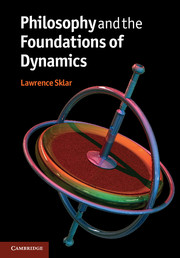Book contents
- Frontmatter
- Contents
- Chapter 1 Introduction
- Chapter 2 The pre-history of classical dynamics
- Chapter 3 The astronomical revolution
- Chapter 4 Precursors to Newtonian dynamics
- Chapter 5 The Newtonian synthesis
- Chapter 6 Philosophical aspects of the Newtonian synthesis
- Chapter 7 The history of statics
- Chapter 8 The development of dynamics after Newton
- Chapter 9 The “Newtonian” approach after Newton
- Chapter 10 From virtual work to Lagrange's equation
- Chapter 11 Extremal principles
- Chapter 12 Some philosophical reflections on explanation and theory
- Chapter 13 Conservation principles
- Chapter 14 Hamilton's equations
- Chapter 15 Canonical transformations, optical analogies and algebraic structures
- Chapter 16 The search for new foundations
- Chapter 17 New directions in the applications of dynamics
- Chapter 18 Spacetime formulations of Newtonian dynamics
- Chapter 19 Formalization: mass and force
- Chapter 20 Relationist dynamics
- Chapter 21 Modes of explanation
- Chapter 22 Retrospective and conclusions
- References
- Index
Chapter 13 - Conservation principles
Published online by Cambridge University Press: 05 December 2012
- Frontmatter
- Contents
- Chapter 1 Introduction
- Chapter 2 The pre-history of classical dynamics
- Chapter 3 The astronomical revolution
- Chapter 4 Precursors to Newtonian dynamics
- Chapter 5 The Newtonian synthesis
- Chapter 6 Philosophical aspects of the Newtonian synthesis
- Chapter 7 The history of statics
- Chapter 8 The development of dynamics after Newton
- Chapter 9 The “Newtonian” approach after Newton
- Chapter 10 From virtual work to Lagrange's equation
- Chapter 11 Extremal principles
- Chapter 12 Some philosophical reflections on explanation and theory
- Chapter 13 Conservation principles
- Chapter 14 Hamilton's equations
- Chapter 15 Canonical transformations, optical analogies and algebraic structures
- Chapter 16 The search for new foundations
- Chapter 17 New directions in the applications of dynamics
- Chapter 18 Spacetime formulations of Newtonian dynamics
- Chapter 19 Formalization: mass and force
- Chapter 20 Relationist dynamics
- Chapter 21 Modes of explanation
- Chapter 22 Retrospective and conclusions
- References
- Index
Summary
Discovery, controversy and consolidation
As is the case with so many of the fundamental concepts of dynamics, Galileo provided the first seminal ideas. In his discussion of falling bodies constrained to inclined planes, he offered an ingenious argument to the effect that the speed obtained at the end of the fall will be dependent only upon the height of the fall, and not on the slope of the incline, at least insofar as friction and air resistance can be ignored.
The argument rests upon intuitive agreement that an object suspended by a string from a pivot point and allowed to fall from a certain height will return to the same height even if the string encounters a nail around which it must pivot at some point in the descent. Two deep notions are encountered here. One is that height in a gravitational field is the unique parameter needed in order to capture the potential for a fall from that height to be able to generate a specific quantity of motion. Here we have the beginnings of the notion of potential energy. The other idea is that the motion generated by a change in height will be independent of the path by which that loss of height is obtained. Here is the beginning of that essential aspect of potential energy that the change in potential energy on going from one point to another, and hence the quantity of motion generated or absorbed, is path-independent. Galileo is clearly aware of the essential difference between the energy “stored” by a gain of height and the energy “lost” owing to, say, friction of the inclined plane or air resistance. In the former case the quantity of motion that disappears can be made to reappear merely by restoring the object to its original height. In the latter it cannot. In the former case the motion temporarily lost is path-independent, depending only on the height gained. In the latter the motion that vanishes is path-dependent.
- Type
- Chapter
- Information
- Philosophy and the Foundations of Dynamics , pp. 118 - 127Publisher: Cambridge University PressPrint publication year: 2012



